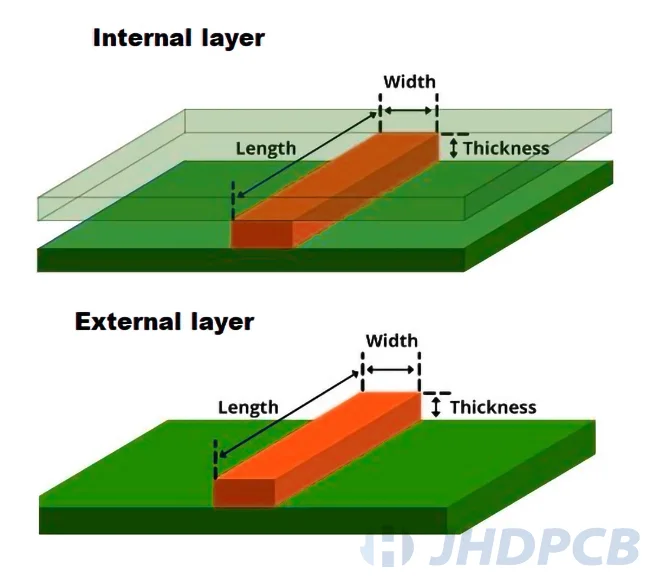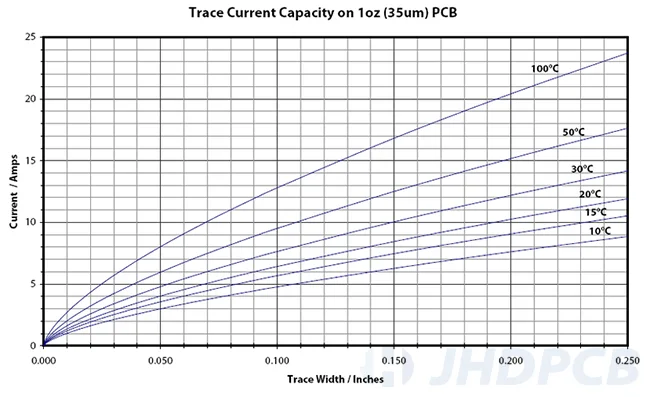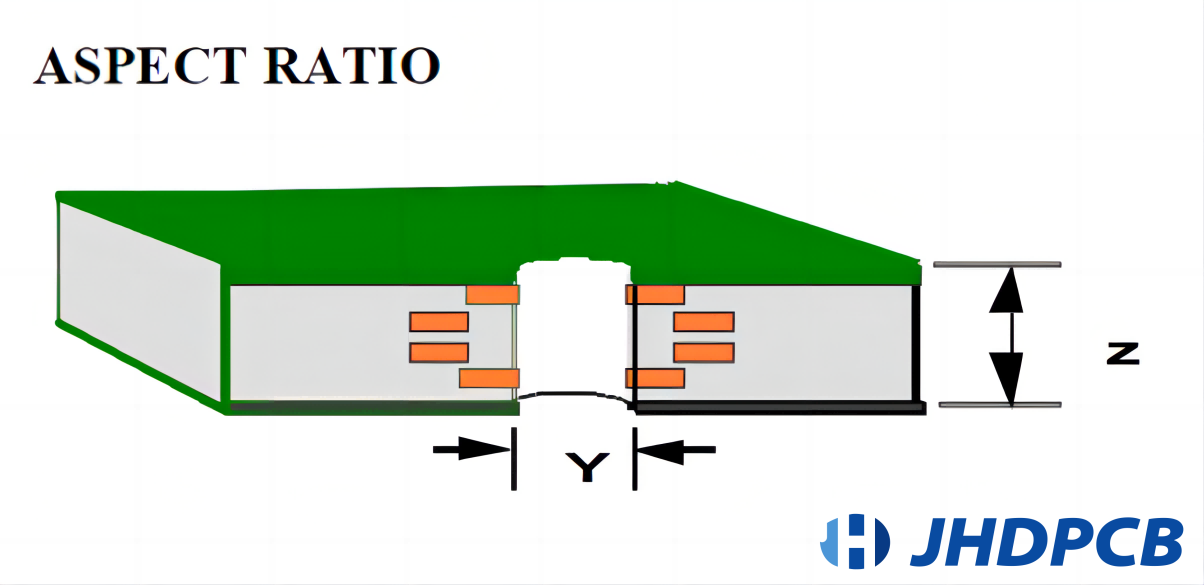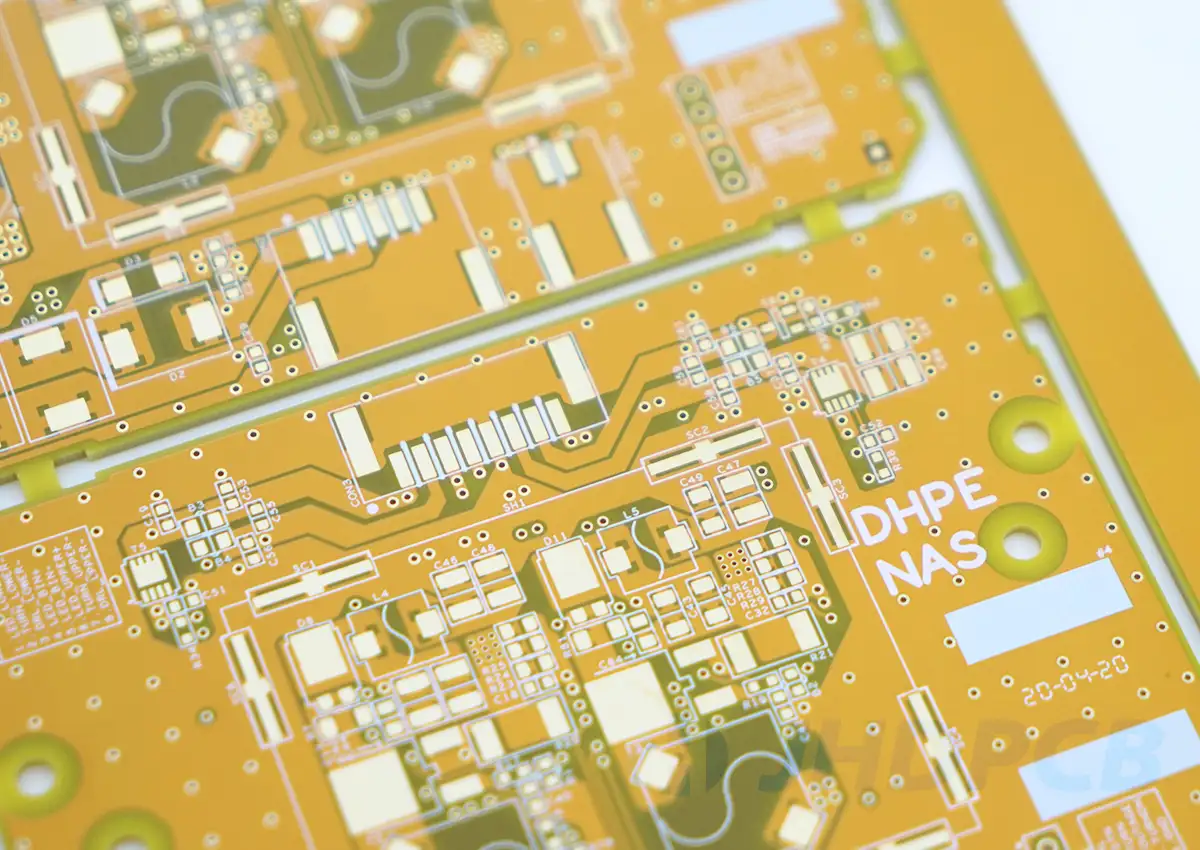The Ultimate Guide to PCB Trace Width Calculator
jhdpcb@gmail.com
Designing a Printed Circuit Board (PCB) involves numerous considerations, and one critical aspect is determining the appropriate trace width for optimal performance and reliability. The PCB trace width directly impacts the board’s ability to carry electrical signals without signal degradation or excessive heat generation. At JHDPCB, a professional PCB manufacturer, we understand the importance of accurate trace width calculations in achieving high-quality and efficient PCB designs.
In this article, we present “The Ultimate Guide to PCB Trace Width Calculator,” a comprehensive resource to help engineers and designers navigate the complexities of trace width determination. We will delve into the factors that influence trace width calculations, such as current carrying capacity, temperature rise, and impedance control. By providing practical insights and tips, we aim to empower our readers to make informed decisions when it comes to PCB trace width selection.
Trust JHDPCB as your reliable manufacturing partner, as we combine our expertise in PCB manufacturing with our commitment to delivering accurate and high-quality solutions. Join us on this educational journey as we explore the intricacies of PCB trace width calculations, enabling you to design PCBs that meet your performance requirements with confidence and precision.
What is PCB Trace and PCB trace width calculator?
A PCB trace is a conductive line on a printed circuit board (PCB) that connects electrical components and carries electrical signals and power between them. Typically made of copper, the trace’s width determines its current-carrying capacity, necessitating proper design to prevent overheating, signal degradation, and voltage drop. More detailed PCB routing knowledge can be learned through our specific library.
A PCB trace width calculator is a tool that calculates the optimal trace width of a PCB based on specific design parameters, such as maximum current, trace length, ambient temperature, and copper thickness. By inputting these parameters into the calculator, the user can obtain the recommended trace width that can handle the required current while minimizing noise and avoiding thermal issues.
The relationship between the two lies in the fact that the PCB trace width calculator helps engineers and designers determine the appropriate trace width for optimal performance and reliability. Trace width directly impacts the circuit’s ability to function correctly and handle the necessary electrical requirements. By using a PCB trace width calculator, the designer can ensure that the circuit is designed to function within the expected limits and requirements.
Therefore, a PCB trace width calculator is a crucial tool in PCB design, ensuring that traces are appropriately sized for their intended use, preventing issues such as overheating, signal degradation, and voltage drop, and ultimately optimizing the performance and reliability of the circuit design.
Why is a PCB trace width calculator important?
The trace width of a PCB is a crucial aspect that significantly impacts the PCB’s overall functionality and safety. The capacity of a trace to convey current without overheating or causing voltage drop is directly proportional to its width. As such, designing PCBs with reliable and secure trace widths is crucial in avoiding electrical failures, equipment damage, and fire hazards.
Designers can benefit greatly from using a PCB trace width calculator to determine the minimum trace width needed for their specific application. Such calculators take into account various factors that can affect the required trace width, such as maximum current, trace length, and temperature rise. By using a PCB trace width calculator, designers can simplify the complex calculations involved in determining the appropriate trace width, saving time and reducing errors in the design process. The calculator allows designers to input the relevant parameters and receive the necessary trace width dimensions instantly, ensuring accuracy and efficiency.
It’s essential to keep in mind that though a PCB trace width calculator is a valuable tool, designers must also take into account other factors like board material and copper thickness while creating a PCB. By considering all these variables, designers can guarantee that their PCBs operate flawlessly, are reliable and safe under various operating conditions.
What differentiates the External vs Internal PCB Trace Width Calculators?

External and internal PCB trace width calculators differ mostly based on the position of the trace within the PCB.
External traces are those that are visible to the environment outside of the PCB, for instance, traces positioned on the board’s edge. The external trace width calculator pcb assesses additional factors that could impact the trace, such as humidity, airflow, and temperature. Since these factors can affect the trace’s ability to carry current and dissipate heat, the external trace width calculator may require different parameters than those used by the internal trace width calculator.
In contrast, internal traces are positioned within the PCB and, hence, are not visible to the environment. The internal trace width calculator presumes that the trace is surrounded by PCB material, which offers extra current-carrying capacity and dissipation of heat. As a result, the parameters employed in the internal trace width calculator could differ from those adopted by the external trace width calculator.
To summarize, the primary difference between external and internal PCB trace width calculators is the position of the trace and the additional variables that could impact its functionality. External traces frequently utilize microstrip lines, while internal traces usually use strip lines. Selecting the appropriate trace width calculator is crucial, and one should consider the trace’s location and the specific conditions it will face. Click for detailed guidance on microstrip and stripline in PCBs.
How to calculate pcb trace width?
| Calculation | Formula |
|---|---|
| Internal Trace Width | w = (I * K * T)/(ΔT * A) |
| External Trace Width | w = (I * K * T)/(ΔT * (0.048 * (T + 100))) |
| Maximum Temperature Rise | ΔT = (I^2 * R * t)/(K * A) |
| Maximum Current | I = (w * A * ΔT * 0.048)/(T + 100) |
| Resistance | R = (ρ * L)/A |
| Voltage Drop | V = I * R |
| Power Consumption | P = I^2 * R |
Calculation method of PCB internal and external wiring.
The calculation method for PCB trace width depends on whether it is an internal or external trace. For internal traces, the following formula can be used:
w = (I * K * T)/(ΔT * A)
where:
w = trace width (in mils)
I = maximum current (in amps)
K = thermal conductivity of copper (385 W/mK)
T = trace thickness (in oz/ft^2)
ΔT = maximum temperature rise (in Celsius)
A = cross-sectional area of the trace (in mils^2)
For external traces, the following formula can be used:
w = (I * K * T)/(ΔT * (0.048 * (T + 100)))
where:
w = trace width (in mils)
I = maximum current (in amps)
K = thermal conductivity of copper (385 W/mK)
T = trace thickness (in oz/ft^2)
ΔT = maximum temperature rise (in Celsius)
The calculation formula of PCB trace temperature.
The maximum temperature rise of a PCB trace can be calculated using the formula:
ΔT = (I^2 * R * t)/(K * A)
where:
ΔT = temperature rise (in Celsius)
I = current (in amps)
R = resistance (in ohms)
t = time (in seconds)
K = thermal conductivity of copper (385 W/mK)
A = cross-sectional area of the trace (in m^2)

The calculation formula of PCB trace current.
The maximum current that a PCB trace can carry without overheating can be calculated using the formula:
I = (w * A * ΔT * 0.048)/(T + 100)
where:
I = current (in amps)
w = trace width (in mils)
A = cross-sectional area of the trace (in mils^2)
ΔT = maximum temperature rise (in Celsius)
T = ambient temperature (in Celsius)
The calculation formula of PCB trace resistance.
The resistance of a PCB trace can be calculated using the formula:
R = (ρ * L)/A
where:
R = resistance (in ohms)
ρ = resistivity of copper (1.68 x 10^-8 Ωm)
L = length of the trace (in meters)
A = cross-sectional area of the trace (in m^2)
The calculation formula of PCB trace voltage drop.
To calculate the voltage drop across a PCB trace, you can use a formula:
V = I * R
where:
V = voltage drop (in volts)
I = current (in amps)
R = resistance (in ohms)
The calculation formula of PCB trace power consumption.
To compute the power consumption of a PCB trace, you can use this formula:
P = I^2 * R
where:
P = power consumption (in watts)
I = current (in amps)
R = resistance (in ohms)
Types of PCB Calculator Trace Width Based on Industry Standards.
There are various trace width calculators in use that follow industry standards. Industry standards govern the calculations made by these calculators. IPC 2152 and IPC 2221 are the two most commonly used standards in industrial and commercial environments.
IPC 2221 PCB Calculator trace width.
The IPC 2221 calculator incorporates an equation and a singular graph to compute the current of the trace. The equation, I=kΔTbAc, incorporates K, B, C, ΔT, and A as variables. For visible traces, K equals 0.0048, while for internal traces, K equals 0.024. ΔT measures the temperature change in Celsius. The values of B and C are 0.44 and 0.725, respectively. In this formula, the area of the trace’s cross-section is represented by the symbol A.
When using an IPC 2221 calculator to calculate the trace width, it’s essential to consider only specific value ranges. The current must be within the range of 0 to 35 amperes, and the track width should be between 0 and 10.16mm. Copper width should lie in the range of 0.5 to 3 oz, while the temperature increase should be between 10oC and 100oC. Failure to implement these values could result in inaccurate findings.
PCB trace width calculator IPC-2152.
The trace width calculator for PCBs employs a more modern standard for determining trace width. Rather than using the simpler equation utilized by the IPC 2221 calculator, the IPC 2152 calculator relies on a more advanced technical method to more accurately calculate the maximum trace current capacity. To obtain the unadjusted cross-sectional area using the IPC 2152 calculator, it’s necessary to use a Universal chart that the calculator integrates.
To determine trace width, this calculator takes various parameters into account to obtain a series of modifiers. These variables include PCB thermal conductivity, distance between copper planes and passing tracks, and thickness of the current passing through traces.
How to use the PCB trace width calculator?
To use a pcb width trace calculator, follow the steps below:
- Determine the current carrying capacity of the trace:
The PCB trace current carrying capacity of a trace is determined by the maximum amount of current it can handle without overheating. This value depends on the thickness and material of the PCB used. For example, if you are using a 1 oz copper thickness, the current carrying capacity may be around 1.4 A for a 10 mil trace width. It is crucial to keep in mind that there exists a tolerance range of roughly +/-10% for this measurement. - Determine the temperature rise limit:
The temperature rise limit for a trace is the maximum temperature it can reach without damaging the PCB. This value is determined by the PCB material and thickness, as well as the expected ambient temperature and the cooling conditions of the PCB. For example, if you are using FR-4 material with a thickness of 1.6 mm, the temperature rise limit may be around 20°C for a 10 mil trace width. However, there is also a tolerance range of approximately +/- 5% for this value. - Enter values into the trace width calculator:
Once you have established the current carrying capacity and temperature rise threshold, you can utilize a trace width calculator to calculate the minimum trace width necessary for those circumstances.These calculators typically take into account the PCB material, thickness, current density, and other factors to calculate the required trace width. Be aware that the calculated trace width should be within the tolerance range of the current carrying capacity and temperature rise limit values. - Adjust parameters as necessary:
If the calculated trace width is too small or too large, you can adjust the current carrying capacity or temperature rise limit to find a suitable trace width. However, keep in mind that you should still account for the tolerance range of these parameters when adjusting them. - Verify the trace width:
After calculating the minimum trace width, it’s important to verify that it is suitable for your design requirements. This can involve using a PCB design software to check for manufacturing errors and DRC errors, or consulting with a PCB manufacturer to verify the trace width against their manufacturing capabilities. Keep in mind that there may be a tolerance range for the trace width, which can depend on factors such as the PCB manufacturer’s capabilities, the trace location on the board, and the expected temperature and current conditions.
In conclusion, the use of a PCB trace width calculator can assist you in determining the minimum trace width needed for your PCB design, ensuring that your traces are designed to handle the required current and temperature effectively.
How to Ensure Efficient PCB Trace Width?
- Identify the standard trace width.
It’s important to ascertain the size of the standard track you plan to incorporate into your design to prevent short circuits in your circuit. If the standard track is too narrow or too close, there is a high risk of shorting occurring. When tracks are distant from each other, there may be limitations on the number of tracks allowed in specific areas. In such scenarios, incorporating additional planes into the circuit boards may be necessary to ensure the circuit board can be routed correctly. - Establish the shapes of the circuit pads.
Typically, component libraries consist of PCB footprint and schematic libraries for different components. However, these libraries rely on the manufacturing process, so it’s crucial to determine the manufacturing process before commencing the design. This will enable you to select the ideal pad sizes and seamlessly integrate them into the PCB CAD system. - Assess the appropriate size for conductive traces carrying electric current.
PCBs have narrow traces that can only handle a certain amount of current. Hence, it’s crucial to take into account the trace size when dealing with any track that conveys power rails instead of low-level signals. - Calculate the measurements of the drill hole and pad.
When starting the PCB design, it’s essential to establish the hole and pad dimensions. Typically, the pad-to-hole ratio is 1:8. However, it’s possible to use a larger pad to evaluate the size of the hole. To ensure compliance with their specific manufacturing process, the PCB manufacturer can provide you with the necessary standards. As the size of the holes and pads decreases, the ratio becomes increasingly important.
PCB Trace Width Calculator FAQ.
How accurate are trace width calculators?
Trace width calculators are generally accurate, but they are based on certain assumptions and simplifications that may not be exact in every situation. Therefore, it’s recommended to add a margin of safety to the calculated trace widths.
Do different PCB materials affect trace width calculations?
Yes, different PCB materials have different properties such as thermal conductivity and resistivity, which can affect the current carrying capacity of PCB traces and temperature rise limit. Therefore, it’s important to use the datasheet values for the specific PCB material being used.
Is trace width the only factor to consider in PCB design?
No, there are other important factors to consider in PCB design such as signal integrity, electromagnetic interference, and power distribution, among others. Trace width is just one of many design parameters to consider.
Is it possible to utilize trace width calculators to compute trace widths for both internal and external conductive tracks?
Yes, trace width calculators can be used for both internal and external traces, but the calculations may differ slightly due to the different factors involved.
How can I verify the trace width in my PCB design?
You can verify the trace width in your PCB design by using PCB design software or by consulting with a PCB manufacturer to ensure that the trace can handle the required current and temperature without causing any damage to the PCB.
Can trace width be adjusted after the PCB is manufactured?
No, trace width cannot be adjusted after the PCB is manufactured. Therefore, it’s important to ensure that the trace width is correct before the PCB is manufactured.
What are the consequences of having a trace width that is too narrow?
Using trace width that is too narrow may lead to an overheated trace which, in turn, can damage the PCB. Additionally, it can cause signal degradation and reduced performance and, as such, it’s crucial to use an appropriate width to alleviate these potential issues.
What are the effects of having a trace width that is excessively wide?
When trace width is more substantial than necessary, it can lead to the wastage of valuable space on the PCB and increased manufacturing expenses. It can also result in slower signal propagation and decreased performance.
How can I optimize trace width in my PCB design?
You can optimize trace width in your PCB design by considering the pcb current carrying capacity, temperature rise limit, and other design parameters such as signal integrity and power distribution. It’s also important to consult with a PCB manufacturer to ensure that the trace width meets their manufacturing capabilities.
In conclusion, having an accurate and reliable PCB trace width calculator is crucial for any electronics designer or engineer. By using such tools, you can be confident that the traces on your PCB are appropriately sized to handle the required current and voltage and to avoid issues such as heat dissipation and signal loss.
If you’re looking for high-quality PCB fabrication and assembly services, we highly recommend JHDPCB. Our wide range of services includes quick-turn prototyping and volume production runs, all while maintaining a focus on quality, speed, and affordability.
At JHDPCB, we possess extensive experience in the industry and an unwavering dedication to ensuring customer satisfaction. We can be your ideal collaborator for fulfilling all of your PCB needs. Feel free to contact us anytime to discuss your project needs and to discover more about how we can transform your designs into reality.










